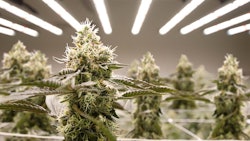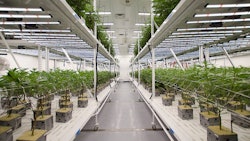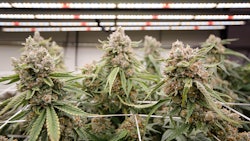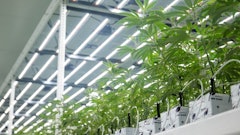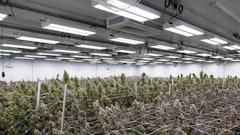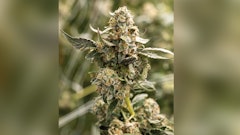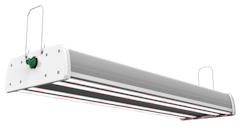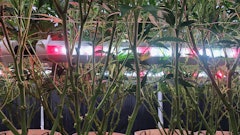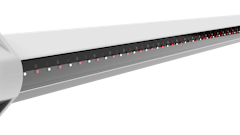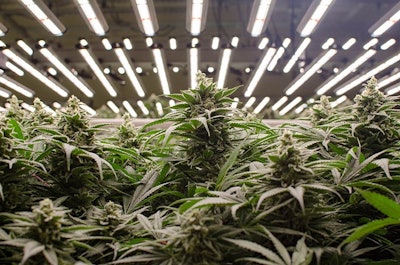
As wholesale cannabis prices continue to drop and states issue regulations to manage cultivation facilities’ energy usage, growers will need to find ways to operate more efficiently. A big piece of the efficiency puzzle is lighting, and utility rebates and incentives are available to help cultivators purchase and install more efficient lighting systems.
Older lighting technologies tend to generate more heat and have higher wattage than more modern LED fixtures, although LEDs’ high price point leaves growers wary of making the investment, according to Corinne Wilder, director of sales operations for Fluence Bioengineering. However, utility rebates and incentives can help cultivators mitigate the difference in cost between LEDs and other lighting technologies, such as high-pressure sodium (HPS) fixtures, for example.
“It’s a wide range of different rebates that are available, but it’s really important for mitigating that incremental cost between HPS and LED,” Wilder says. “HPS can typically be around $350 a fixture. … LED can be anywhere from $1,000 to $1,500. So, it could be three to five times more expensive, and any type of utility rebate that helps get that cost down and help customers afford the fixtures on the front end is important.”
Some states have issued rules to manage how much energy cannabis cultivation facilities use. Massachusetts, for example, allows recreational cannabis cultivators of 10,001 square feet and above to use a maximum of 36 watts per square foot, Wilder says. Lighting manufacturers can often help growers design lighting and implement strategies to meet these specifications, and utility rebates can help make the technology affordable.
Utility companies often offer these rebates and incentives to reduce the impact on their grid, Wilder says. Horticulture facilities use greater amounts of electricity, which can be problematic if a utility provider’s grid has a limited electrical load.
Utility companies have recognized that they can gain energy savings from incentivizing these types of businesses to use less electricity. “It’s a choice of basically the utility company saying, ‘Do we incentivize these existing companies of ours to use less electricity than they already are, or do we invest in building new power plants in order to provide additional load to the system?’” Wilder says. “Almost always, it’s a better idea for them to incentivize people to use less electricity than it is to build more infrastructure.”
According to Wilder, these are the most common utility rebate and incentive questions.
What kinds of utility rebates and incentives are available for cannabis cultivators?
There are two types of rebate programs that utility providers typically offer: prescriptive rebates and custom rebates.
Prescriptive rebates: A prescriptive rebate is a standard offer that says, for example, if a grower replaces one, 1,000-watt HPS fixture with a 600-watt LED fixture, that grower will receive x number of dollars for each fixture replaced.
Custom rebates: A custom rebate usually requires a cultivator to submit paperwork, lighting designs and a completed workbook, for example, that shows the exact number of older lighting fixtures compared to newer fixtures. The rebate is usually higher with custom rebates, but more work is required, Wilder says.
Rebates vs. incentives: A rebate typically implies that the monetary reward is provided after the purchase of the lighting fixture, while an incentive generally means that cultivators must file an application for the program before they purchase the fixtures. Growers working with a utility incentive program should file for the program four to six weeks before ordering the fixtures, Wilder says, and they should be prepared to compile documentation and lighting designs beforehand.
What is the process for cannabis cultivators to take advantage of utility rebates and incentives?
The first step to getting involved in a utility rebate or incentive program is for growers to ask either their lighting manufacturer or utility provider (or both) if they qualify for an existing program, Wilder says. “I would recommend first asking the lighting manufacturer if they know of any utility rebates in their particular area, and/or then contacting their own utility company and seeing if they qualify.”
If none of the utility providers in a particular area offer rebate or incentive programs, lighting manufacturers can sometimes make a case for one, Wilder adds. “So, basically, we would just go in and make the case for that particular customer and show what other utility companies are doing across the U.S. This gives the utility the data they would need in order to consider a special situation, custom rebate offering.”
Most utility rebates and incentives are monetary based, Wilder says, where a utility company provides a dollar amount to offset the cost of a grower installing a new lighting system. A rebate usually comes in the form of a check four to six weeks after a final inspection is conducted by the utility provider to ensure that the fixtures have been installed and match the original lighting design provided at the beginning of the process.
Typical rebates are somewhere between 20 and 40 percent of the cost of the lighting system, but in certain areas can be upwards of 75 percent. It’s all based on location, Wilder says.
How can cannabis cultivators benefit overall from utility rebates and incentives?
Not only does taking advantage of a utility rebate or incentive help cover some of the cost of a new lighting system, but using more energy efficient lighting can help cultivators decrease operational expenses going forward, Wilder says. This also includes savings on HVAC costs because more efficient lighting uses less BTUs and gives off less heat, she adds.
“So, it’s not just the lighting benefit that they save with reduction in total amount of watts, but it’s also the total amount of BTUs that are put into the air, so there’s less cooling that they have to provide for their grow,” Wilder says.
And switching to LED fixtures often eliminates the need to replace bulbs, which means growers can spend less time and money on materials and labor in that area, as well.
What does the future hold for energy efficient lighting?
A forthcoming DesignLights Consortium (DLC) certification will eventually allow utility companies to look at a DLC-certified lighting fixture and know that it meets energy efficiency guidelines, Wilder says.
“I like to describe it as the Energy Star certification for LED fixtures,” she says. “So, it’s one of these certifications that utility companies can look to and say, ‘Oh, it’s DLC-qualified? Great, I don’t have to do my own testing to make sure that this is a quality, energy efficient product.’”
DLC certification will be available for utility providers to start using in mid-October to early November, Wilder says, and DLC-certified lights will be rated based on efficiency ratings and photosynthetic photon flux (PPF) (how many photosynthetically active photons are being emitted from the light source every second), among other criteria.








